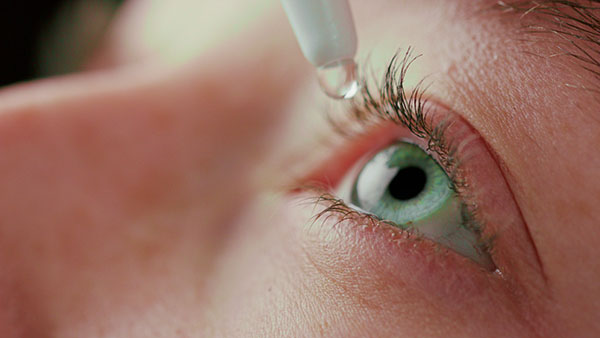
- FDA experts recommend banning talc from food and drugs, citing links to cancer and chronic disease.
- Talc is found in 4 of 10 top U.S. drugs, including Lipitor and Synthroid, but alternatives like calcium stearate exist.
- Talc remains legal in food due to FDA’s “GRAS” loophole, not requiring labeling.
- Over 20 million Americans take talc-containing medications, raising safety concerns.
- Johnson & Johnson’s $6.5B talc lawsuit settlement underscores long-standing public health risks.
In a watershed meeting on May 20, a panel of U.S. experts urged the FDA to ban talc — a mineral linked to cancer — from food and pharmaceuticals after decades of public health concerns. The move follows decades of litigation against companies like Johnson & Johnson, which in 2024 settled 99% of its ovarian cancer lawsuits over talc-based baby powder. The FDA’s recent focus on talc in everyday products underscores a dramatic shift in attitudes toward this widely used substance, now recognized as a probable carcinogen after decades in the shadows.
FDA panel: Talc’s deadliest threat may be in your medicine cabinet and lunchbox
The U.S. Food and Drug Administration (FDA) convened its panel to address growing evidence that talc — a mineral in consumer products since the 19th century — is a hidden health threat. Talc, composed of magnesium, silicon, and oxygen, is used as an anti-caking agent or lubricant in everything from chewing gum to pills.
Dr. George Tidmarsh, a Stanford University pediatrician and panelist, highlighted its presence in four of the 10 most-prescribed U.S. medications, including cholesterol drug Lipitor and diabetes medication Metformin. “The white powder on gum that keeps it from sticking to the wrapper is carcinogenic,” Tidmarsh stated, describing talc’s role in chronic inflammation, a precursor to cancer.
Panelists emphasized urgency, citing a 2024 World Health Organization (WHO) finding that talc is “probably a human carcinogen.” Dr. John Joseph Godleski, Harvard professor emeritus, added, “Talc stays in human tissue for years, causing immune disruptions,” while FDA Commissioner Marty Makary lamented, “We’re feeding it to children in candy and pills — and scratching our heads as cancer rates rise.”
The invisible danger: Why talc in food goes undetected
What’s particularly alarming is talc’s presence in food. Unlike drugs, where talc appears on ingredient labels, no such disclosure exists for foods. This is due to talc’s “GRAS” (Generally Recognized as Safe) status, allowing manufacturers to use it without FDA oversight.
“Hundreds of products could contain talc — cheese coatings, salt, powdered milk, cereal,” Tidmarsh said, citing UN food codes. Recent studies found talc in flour and rice, yet consumers have no way to avoid it.
The Health Secretary Robert F. Kennedy Jr. urged the FDA to close this loophole, demanding safety reviews for GRAS ingredients. Yet panelists, including chemist Steven Pfeiffer, note alternatives like magnesium stearate exist and are cheaper, leaving the FDA’s inertia perplexing.
J&J’s billion-dollar cover-up and its aftermath
The FDA’s current focus on talc isn’t new. For decades, companies like Johnson & Johnson faced lawsuits over talc in cosmetic products, including allegations of ovarian cancer ties. In January 2024, J&J agreed to a $6.5 billion settlement to resolve 99% of its 50,000+ talc lawsuits, acknowledging risks but maintaining “the safety of our products remains our priority.”
However, evidence revealed asbestos — a lethal carcinogen — often contaminates talc. Court filings cited internal J&J memos acknowledging contamination risks as early as the 1970s. Facing billions in judgments and public distrust, J&J’s move reflects how talc’s dangers, long dismissed, now hit mainstream understanding.
The path forward: Can the FDA act, and how fast?
Panelists called for immediate action, but FDA response remains unclear. While some states have moved to restrict talc—New York’s tentative ban in 2024 — federal changes hinge on the agency’s slow regulatory process.
“This isn’t just about one thing — it’s about our entire food system,” said panelist Dr. Arman Sharma, noting systemic industry reliance on risky additives. With alternatives proven safe and cost-effective, experts argue that the FDA’s delay prioritizes corporate interests over public health.
A crossroads for public health and industry ethics
The FDA’s panel highlighted what activists have long claimed: talc’s role in disease is undeniable. With pharmaceutical giants like J&J repeatedly sidelining safety concerns, and millions of Americans ingesting talc daily, pressure grows for regulators to act. As FDA’s Makary poignantly noted, “Why are we feeding poison to children?”
The decision isn’t just about safety — it’s about trust. As the agency weighs how and when to restrict talc, the legacy of J&J’s deception looms. If history repeats, another generation may pay for ambivalence.
Sources for this article include:
Please contact us for more information.















